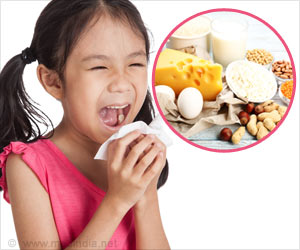Food allergy is triggered by the perfect storm of genetics and exposure to infant wipes, dust and food, shows study.
- The perfect mix of environmental and genetic factors that must coexist to trigger food allergy.
- The factors that trigger food allergy include the genetics that alter skin absorbency including skin exposure to infant wipes, dust and food.
- The study also suggests that the factors leading to food allergy can be modified in the home environment.
The factors that contribute to food allergy include the genetics that alter skin absorbency, like the use of infant cleansing wipes that leave soap on the skin, skin exposure to allergens in dust and skin exposure to food from those providing infant care. When these factors occur in combination with each other, food allergy is triggered.
Modifying the risk factors
However, the study suggests that there are potential ways to intervene early to avoid developing food allergy. This includes limiting the use of infant wipes that leave soap on skin and washing hands before handling the baby."Reduce baby's skin exposure to the food allergens by washing your hands before handling the baby," said lead study author Joan Cook-Mills, a professor of allergy-immunology at Northwestern University Feinberg School of Medicine. "Limit use of infant wipes that leave soap on the skin. Rinse soap off with water, like we used to do years ago. "
The genetic contribution
The team discovered the 'perfect storm' triggering food allergy by using clinical evidence about food allergy in humans, the effects of food allergen and environmental allergen exposures and neonatal mice with genetic mutations that occur in humans.Clinical evidence shows up to 35% of children with food allergies have atopic dermatitis and majority of that is explained by at least three different gene mutations that reduce the skin barrier.
The team then used neonatal mouse model with the same skin barrier mutations and tried exposing its skin to food allergens like peanuts. However, the peanuts alone had no effect.
It was observed that a skin barrier dysfunction was necessary for food allergy to develop in the mice.
Reference:
- Matthew T. Walker, Jeremy E. Green, Ryan P. Ferrie, Ashley M. Queener, Mark H. Kaplan, Joan M. Cook-Mills. Mechanism for initiation of food allergy: Dependence on skin barrier mutations and environmental allergen costimulation. Journal of Allergy and Clinical Immunology, 2018; DOI: 10.1016/j.jaci.2018.02.003
Source-Medindia
















